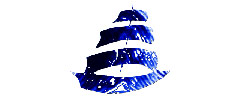A number of the artefacts will be examined using the X-ray imaging equipment. Each image is a 2-dimensional X-ray representation of the material in the object. To construct a 3-dimensional computed tomography (CT) X-ray image the artefact must be rotated in the beam. Special algorithms enable the data set resulting from the 2D images taken at, for instance, 50 intervals of a full rotation of the artefact, to be converted into a 3D image.
For this project a 20’ insulated shipping container has been partitioned to provide an X-ray system compartment and another room where the data will be analysed and logged into the master catalogue. The master catalogue will contain the results of analyses of all the artefacts retrieved.
Xray equipment in operation (photo by Andy Viduka)
Professor Dudley Creagh (University of Canberra), Andy Viduka (DotE) and Brett Sampson (Australian Federal Police) are working together to provide the X-ray system for the project. The Australian Federal Police is providing the X-ray source (GE XR200) which operates at 150kV, imaging plates (GE IPC2), and a portable Imaging Plate scanner (GE CR25P). This is a portable system usually used to examine small parcels. Professor Creagh has designed an enclosure to house the X-ray system which meets regulations to prevent X-ray leakage and protects the people using the X-ray unit. This bespoke enclosure has been fabricated by a team led by Ben Nash of the Australian National University (Faculty of Engineering and Information Technology).
Professor Creagh will lead a team undertaking the conversion of the data sets from 2D to 3D images. The X-ray enclosure incorporates a 3D camera (Sony DSC-TX10). For each rotational position of the artefact both 2D and 3D photographs will be taken to help interpret the X-ray image, also giving a set of rotational 3D images of the artefact.


















